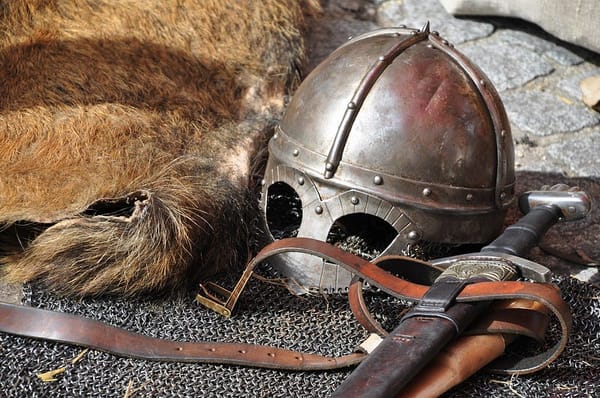Snapshots from Argentina
Notes from our journey to the jewel of South America.
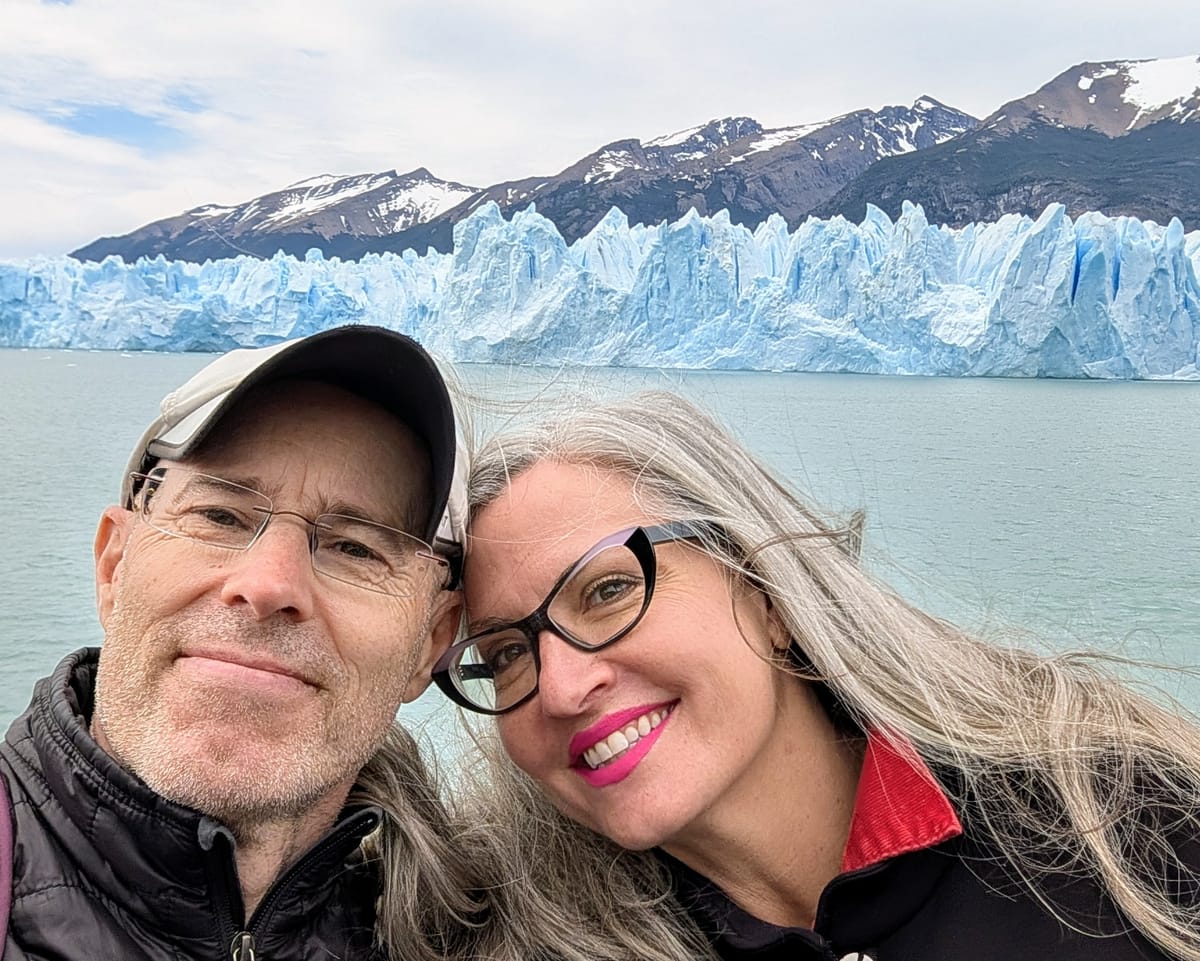
Argentina, you take my breath away.
I mean that both literally—Argentina is a land filled with incredible natural beauty—as well as musically: the soundtrack playing in every parilla, bodega, airport, and Uber is exclusively 1980s American and British top-40 pop.
If you're a fan of Berlin, Phil Collins, or Iggy Pop, Argentina has got you covered. For the duration of our visit, every restaurant, gas station, bar, and taxi played nothing but the hits from my high school prom.
I strongly suspect that the Argentinean national anthem is Come on Eileen.
Anyway, we spent 17 days in Argentina recently to escape the gloom and darkness of Portland's rainy season. Argentina is the ultimate cheat code: summer when the USA is in winter, plus a timezone that makes it easy to work with the office back home. It's a hidden gem.
Argentina is also an enormous country, spanning half of South America. There are subtropical rainforests near Brazil, vast prairie lands out west that are home to Gaucho cowboy culture, a world renowned wine growing region, and the stunning Patagonian Steppe, reaching its fingers to within several hundred miles of Antarctica. To paraphrase famous Argentinean band The Rolling Stones, you can always get what you want, whether it's the urban sophistication of Buenos Aires, a world-class Malbec from Mendoza, or the unspoiled splendor of the Andes mountains.
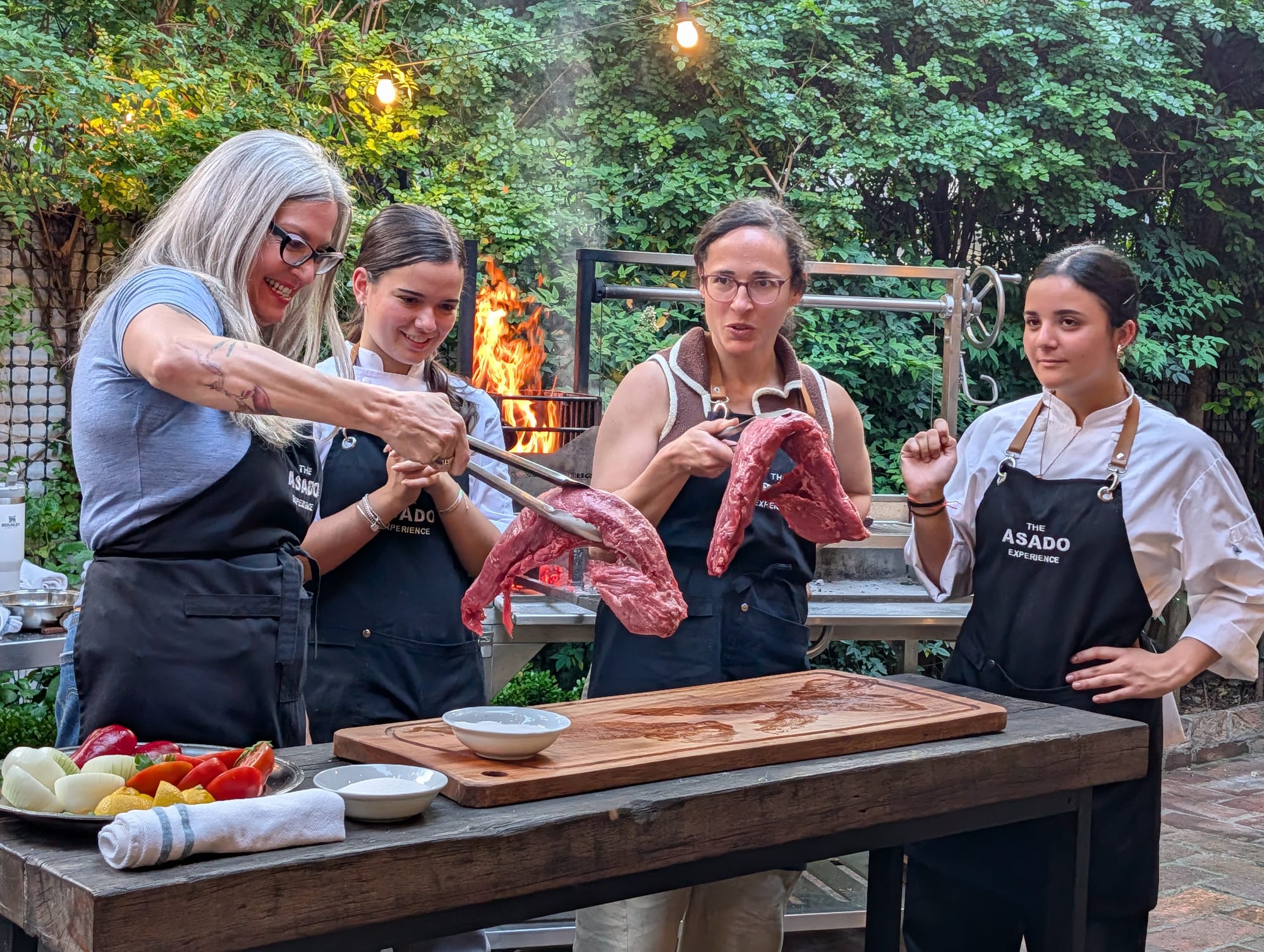
All About the Asado
"I have a question," drawled the gray-haired oilman from Houston.
We were attending a backyard asado—a barbecue—at a private home in Buenos Aires. Three young women chefs, the asadoras, were teaching us the secret techniques of this quintessential Argentinean tradition. We had already learned how to select the right wood for the fire, how to spread the coals for a mix of direct and indirect heat, and how to carefully split chorizo sausages and nestle them into toasted rolls to make spicy choripan sandwiches. Thirteen of us travelers were gathered around hot fires as the asadoras prepared our next course: plump, sizzling blood sausages.
"My question," said the Texas oilman, standing up and pointing a bony finger at the grill, "is why are they called blood sausages?"
The question hung in the air. A hush fell over the group.
Near the fire, the asadora blinked a few times, puzzled. The sound of birds and early evening traffic filled the silence.
"Umm," she said, "because that's what they're made of."
There were no further questions.
The rest of the evening was a blur of meat and conversation. We ate lomo de bife while giving career advice to a couple from Nashville. We sampled juicy matambre de cerdo, a thin, crackling pork belly, while sharing travel stories with a digital nomad from Macao.
But mostly, Hadas and I passed the time occasionally whispering to one another under our breath:
"Why are they called lamb chops?"
"Because that's what they're made of."
And later:
"Why is it called grilled chicken?"
"Because that's what it's made of."
Comedy gold.
The blood sausages—which, in case I have not been clear, are SAUSAGES MADE OUT OF BLOOD—turned out to be a tad mushy for my taste. Otherwise, the meat was delicious. Argentina takes great pride in not just the flavor but also the sheer quantity of their cattle. "Argentina has more cows than people," our host gleefully informed us during a break between courses, although that statistic may no longer be valid after Hadas and I spent two weeks eating our way through the country's bovine population.

It Takes Two to Tango
We signed up for a private tango lesson.
The class took place in a sixth-floor apartment overlooking the Palermo neighborhood of Buenos Aires. Our instructor, Marianella, was lithe and elegant. She moved with fluid grace as she greeted us at the door with the traditional Argentinean cheek kiss.
We shed jackets and hats and stepped onto the dance floor. Marianella put on canyengue, the traditional tango music of Argentina. She encouraged us to begin easily, simply strolling around the room while we felt the rhythm of the song.
"Very good!" She clapped her hands together with delight as we moved to the upbeat rhythm of violin and guitar. We weren't dancing yet, but we were feeling the soul of the music in our bodies.
She taught us our first tango pattern: walk, walk, side step, side, back, back step. We followed her in the mirror. She added an extra forward step. We copied her movements. We were doing it. We were getting the hang of it!
It was finally time to tango.
She brought the two of us together into the closely-held tango embrace—the abrazo—bodies rigid, chests upright, grasping each other with arms held firmly. We stood together as the music began, poised to move.
"You are ready to try the pattern together," Marianella exclaimed with palpable excitement. "Dance!"
We began to move.
Now, I should pause here to mention that neither Hadas nor I are particularly talented dancers. Each of us can sometimes be clumsy or awkward, prone to losing the beat or forgetting the steps of the dance. Neither of us is light on our feet.
And yet, in this moment, as the two of us began our lovers' tango around the parquet dance floor, it became clear that while we may not have been individually talented, collectively we had the fluid grace of a herd of inebriated rhinoceroses.
We stepped on feet. We knocked knees. We careened dangerously close to a free-standing mirror.
Taking the lead with all the confidence of a trembling Yorkshire Terrier, I spun Hadas around the dance floor as though we were a malfunctioning Roomba. We were not dancing to the rhythm of the music so much as professional wrestling while the iPod speaker mercifully drowned out the sounds of wounded panting and whispered apologies.
"You're doing so great!" said Marianella, cheering us on while she snuck a glance at her watch to see how much time was left in this hour-long lesson.
We didn't get much better, but we did leave bruised, exhausted, sheepish, and exhilarated. We can't wait to take more tango lessons.

Beautiful Bariloche
Our flight to Bariloche was rescheduled from 7:40 a.m. to 7:00 a.m., then from 1:30 p.m. to 4 p.m. Aerolíneas Argentinas treats flight schedules the same way we dance the tango—haphazardly and randomly, with fits of indecision.
The passengers burst into applause as the airplane wheels touched down on the runway. That struck me as unnecessary; "landing" should be considered table stakes for an airline. A pair of Greek passengers sitting in my row practically vaulted the seats so they could stand in the aisle before we reached the gate, allowing them to exit the aircraft 1.2 seconds faster when it was our row's turn to deplane 15 minutes later.
We picked up our rental car, a Renault Logan, which was a compact sedan with all the appeal of the French Revolution. The car featured a sluggish manual transmission and a suspect trunk latch that encouraged one's luggage to exit the vehicle at highway speeds.
Our Airbnb stood on a hill overlooking lake Nahuel Huapi, with a view that, to paraphrase the Argentinean band Berlin, left us with no more words. Dramatic snow-covered mountains in the Andes rose into the distance while hawks circled the treetops near the windows, sometimes alighting on the deck railing to peer in the windows and watch us soak in the in-room hot tub.
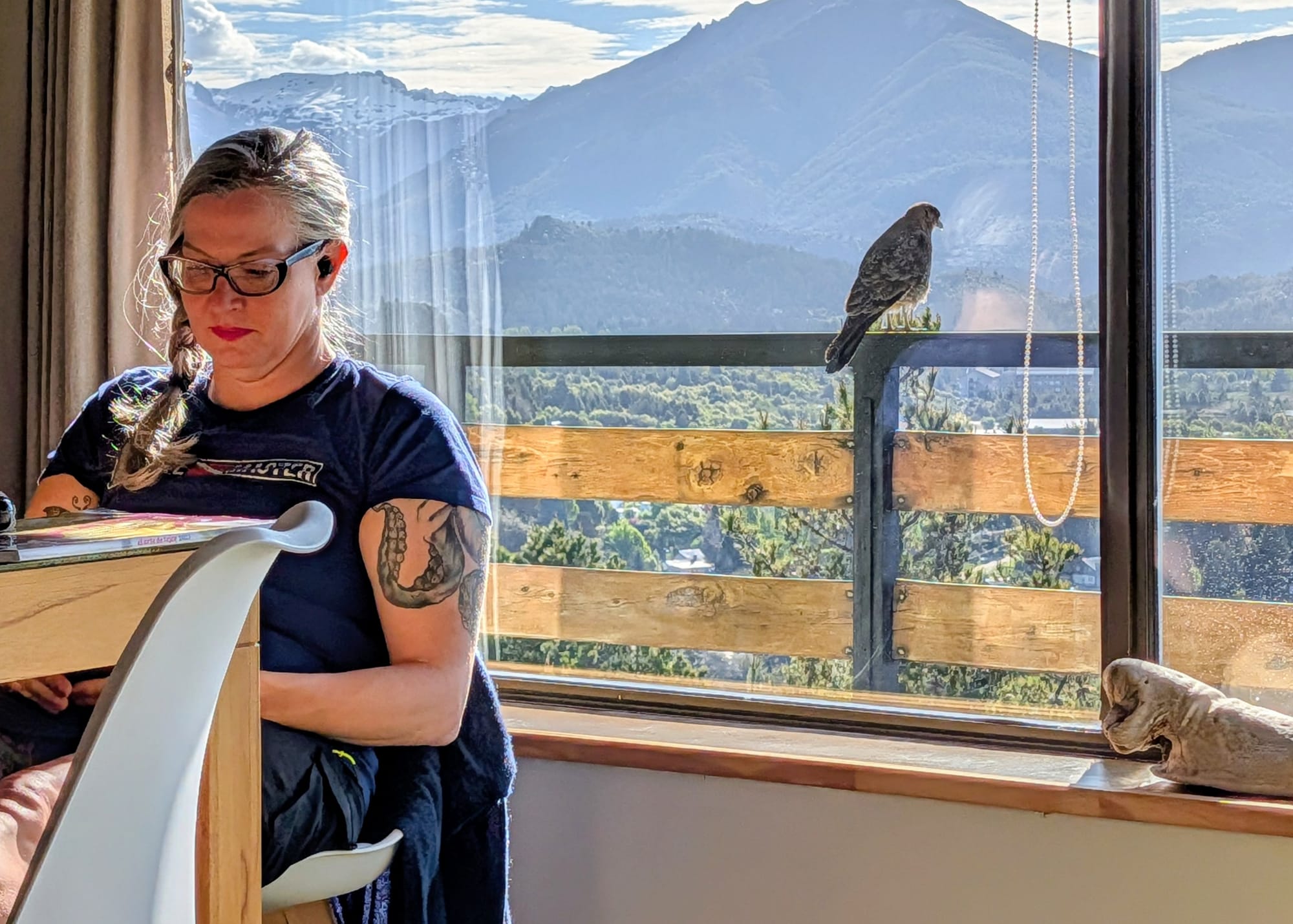
We settled into a week of remote work, gym workouts, and depleting the local cow population. Occasionally, we would embark on a death march hike up the side of a mountain to enjoy ever-more-spectacular views. Much of this region was settled by German and Swiss immigrants, so the architecture has a distinctly Bavarian flavor. It's like the Alps, but with more Billy Joel.
There are chocolate shops everywhere.
Argentina feels like a laid-back version of Europe. The people are incredibly nice. I can't remember visiting another country where, day to day, you come across so many kind, helpful folks. The grocery store clerk—a delight! The woman sharing a leg press machine at the gym—quick with a smile. The airport immigration official—literally cracking jokes as I showed my passport.
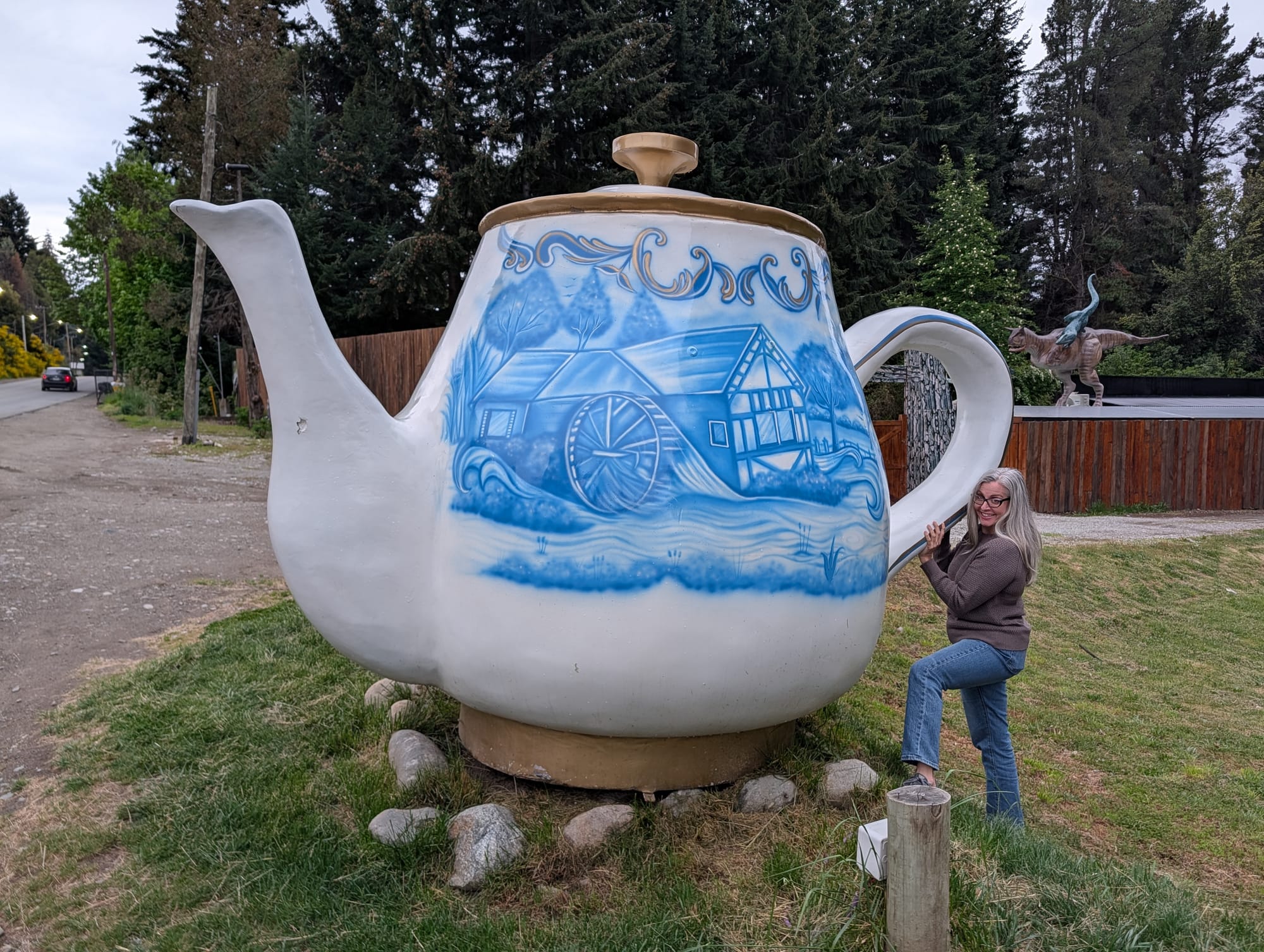
A Quest for Mate
The most popular beverage in Argentina is not coffee. It's yerba mate, known simply as "mate." You enjoy mate out of a small handle-less cup (also known as a "mate"), sipped through a spoon-like straw called a bombilla. To drink mate, one fills the cup with yerba leaves and pours on a splash of 80° C water from a thermos, making a kind of on-demand tea. You gradually repeat this pouring and sipping process over the course of the day. Everywhere you go, people carry their mate, thermos, and bombilla, the same way Americans carry their favorite coffee mug.
And yet...
Unlike coffee, mate is a very personal drink. There is no mate equivalent of Starbucks. You can't order a mate in a restaurant. There are no drive-thru mate stands along the side of the road. We were desperate to try mate, and yet there was no simple way to try mate.
It was as if you visited Chicago in search of a deep dish pizza and were told that you had to make your own.
Luckily, we found a small shop in Bariloche that sold mate cups. The kindly proprietor offered to teach us how to drink mate. He filled a cup with leaves, poured in water from his personal thermos, and let us sip through a bombilla.
It was ... interesting.
If you like green tea but wish it tasted more like lightly-caffeinated lawn clippings, mate is your bag. Otherwise, mate might be an acquired taste. I've never been a fan of tea (or turf) so it wasn't for me. Hadas is still working on it. She purchased several mates and several bags of yerba leaves and spent the rest of the trip attempting to cultivate a mate habit like a native Argentinean.

Three Dog Night
We flew from the small town of Bariloche to the even-smaller town of El Calafate, about two-thirds of the way towards the southern tip of South America. We picked up a nearly-identical Renault Logan at the airport, slammed the trunk five times until it latched, and then rolled through the quaint downtown. There are exactly zero stoplights in El Calafate.
There are, however, approximately 54 million stray dogs in the city. Collectively, the town has taken the phrase let sleeping dogs lie to heart. There are dogs on every corner. Dogs on side streets. Dogs at the bus stop. Dogs sitting outside every souvenir shop. One day we sat on a bench in the downtown area while cars rallied down the main drag honking their horns and waving flags to celebrate that day's victory by Club Atlético Boca Juniors, one of the country's most popular soccer teams. Several fluffy dogs came by for a petting. More dogs trotted along the sidewalk across the street. People stepped over the dogs that were sleeping in the grocery store doorway.
None of the dogs are going hungry; the citizenry of El Calafate love their stray pooches and feed them well. Asado restaurants toss half-eaten racks of lamb into the street. People put out kibble and water bowls. We scritched a plump Shiba Inu around the ears while a dachshund that was more bratwurst than wiener dog sniffed at our shoes.
One night we waded through the sea of dogs to visit a restaurant and sample the local delicacy: guanaco. It tasted like llama.
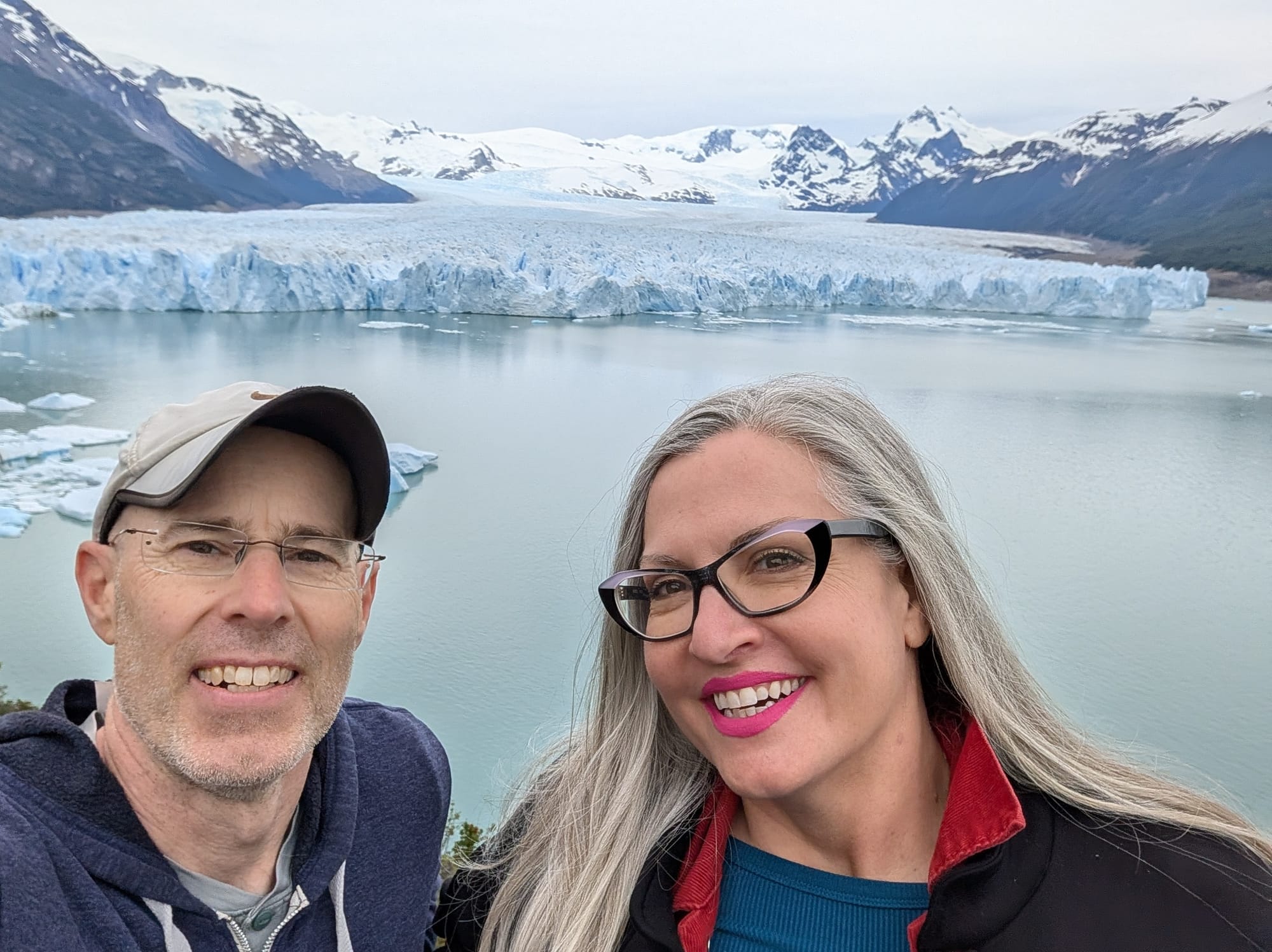
The Ice is Nice
The main reason we came to El Calafate was to visit Perito Moreno, a hundred-square-mile behemoth of a glacier just 90-minutes from town. Our trustworthy Renault Logan handled well on the windswept highway; impressive for a French car named after one of the X-Men.
After arriving at Párque Nacional Los Glaciares and paying the 80,000 peso entry fee—inflation has made all prices in Argentina look like line items in the national debt—we took a boat across Lago Argentino to experience the face of the glacier up close. The ice was a dramatic blue, riven with cracks and valleys, looming over the boat like an ancient temple. A hundred Chinese, German, and Italian tourists lugging heavy SLR cameras gang rushed from the cabin onto the boat's rooftop deck, while the tour guide shouted in vain for them to sit down and listen to the safety briefing.
Once back on land, we hiked a 1.5-mile walkway up along the side of the mountain, so we could view the glacier from a higher vantage point. The ice field extended as far as we could see into the distance, but it was just a small fraction of this massive glacier that has flowed for centuries between the mountains. While we were standing at the overlook, a huge wall of ice suddenly sheared off the face of the glacier, calving into the lake with a thunderous crash. The sound echoed throughout the valley while the newly-birthed iceberg bobbed to the surface, slowly rotating in place until it found its equilibrium in the water and began drifting away slowly, waves rippling outward toward the shore.
I took Hadas's hand in mine. We gazed out across the shimmering field of blue ice, reflecting on this moment. Argentina had charmed us, amazed us, and stolen our hearts. I whispered into her ear:
"Do you know why they're called icebergs?"
She answered:
"Because that's what they're made of."





